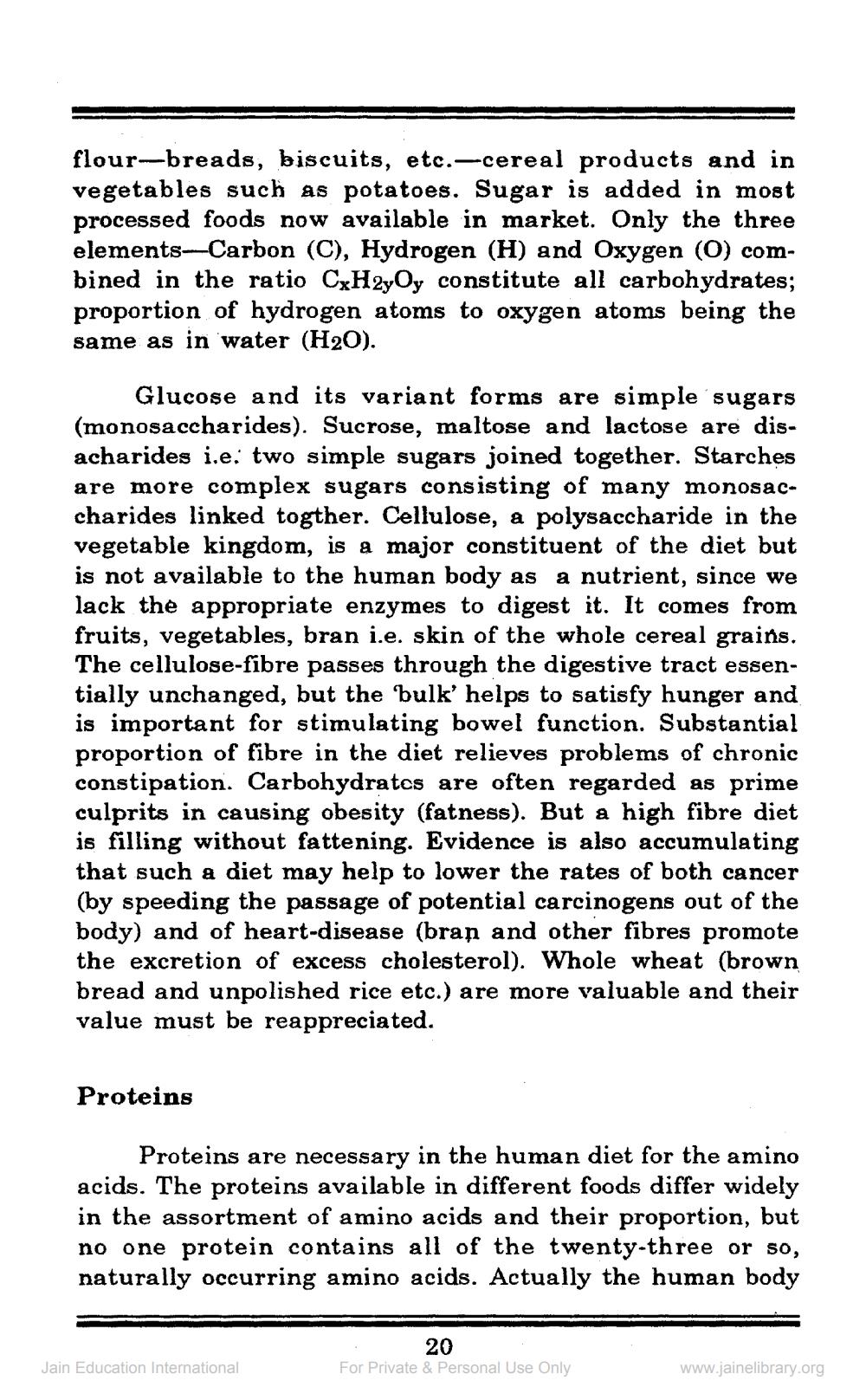________________
flour-breads, biscuits, etc.-cereal products and in vegetables such as potatoes. Sugar is added in most processed foods now available in market. Only the three elements-Carbon (C), Hydrogen (H) and Oxygen (O) combined in the ratio CxH2yOy constitute all carbohydrates; proportion of hydrogen atoms to oxygen atoms being the same as in water (H2O).
Glucose and its variant forms are simple sugars (monosaccharides). Sucrose, maltose and lactose are disacharides i.e: two simple sugars joined together. Starches are more complex sugars consisting of many monosaccharides linked togther. Cellulose, a polysaccharide in the vegetable kingdom, is a major constituent of the diet but is not available to the human body as a nutrient, since we lack the appropriate enzymes to digest it. It comes from fruits, vegetables, bran i.e. skin of the whole cereal grains. The cellulose-fibre passes through the digestive tract essentially unchanged, but the bulk helps to satisfy hunger and is important for stimulating bowel function. Substantial proportion of fibre in the diet relieves problems of chronic constipation. Carbohydrates are often regarded as prime culprits in causing obesity (fatness). But a high fibre diet is filling without fattening. Evidence is also accumulating that such a diet may help to lower the rates of both cancer (by speeding the passage of potential carcinogens out of the body) and of heart disease (bran and other fibres promote the excretion of excess cholesterol). Whole wheat (brown bread and unpolished rice etc.) are more valuable and their value must be reappreciated.
Proteins
Proteins are necessary in the human diet for the amino acids. The proteins available in different foods differ widely in the assortment of amino acids and their proportion, but no one protein contains all of the twenty-three or so, naturally occurring amino acids. Actually the human body
20 For Private & Personal Use Only
Jain Education International
www.jainelibrary.org




